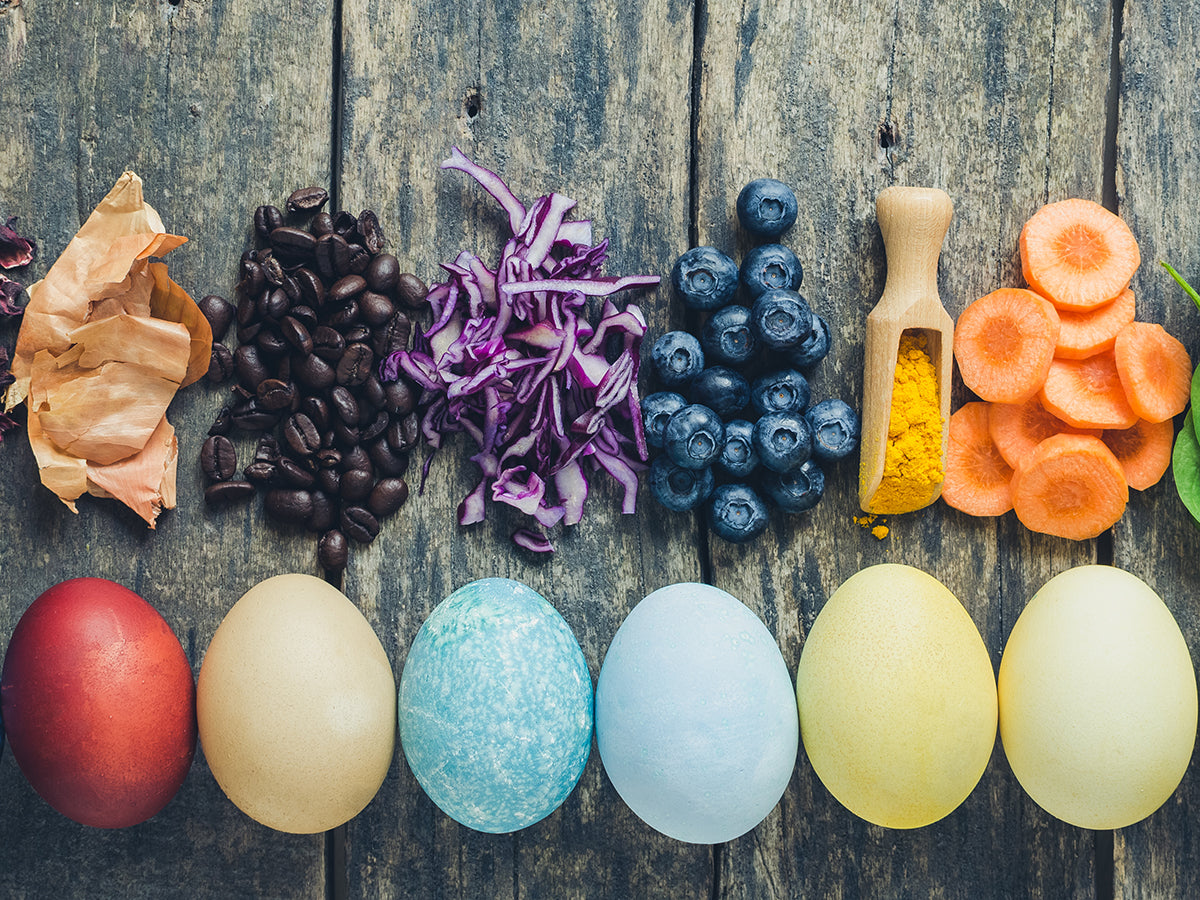NATURAL FOOD COLORS AND DYES

If you are like many of us, you love to dress up birthday cakes, holidays cookies, cupcakes, and other treats with color when the time comes for a special occasion. Beverages also get the food coloring treatment when the occasion calls for something festive – after all, what would a St Patrick’s Day party be without cold Green Beer.
Food coloring is commonly used in the commercial production of everything from candy to wine. Children respond well to colors and are attracted by colorful foods. As a result, they often consume the majority of products containing color additives such as candies, cupcakes, cookies, artificially colored juices and sodas, etc. Furthermore, many food items are now being imported from countries where regulations and quality of ingredients have lower standards than in the United States. Parents are rightfully growing concerned by the safety of the food products their family consume, especially their effects on children.
The US Food and Drug Administration (FDA) has performed extensive testing of artificial food coloring and has not found any direct links between the ingredients of certified food colorings and disease of any kind, although it has been found that some people are allergic to the synthetic ingredients used in artificial coloring products such as Red 40 and Yellow 5. We cannot continue to stress the importance of reading product labels and ingredients statement. Always check the ingredients of food coloring, both natural and synthetic, to make sure that all the artificial colorings used are FDA certified (they will have FD&C before their names) and that there isn’t any allergen that might be harmful to your family or yourself.
Although artificial food colorings are perfectly safe to consume within the guidelines set by the FDA, natural food colors have been growing in popularity over the past decade and are made using dyes commonly found in nature. They are the best choice for health-conscious consumers and people with allergies to artificial dyes, but have a relatively low light and heat resistance. As such they are best used for low heat or no heat applications and food products that will not be exposed to harsh lighting for long period of time.
Where do natural food colors come from?
The most common sources of natural dyes per color are:
- Red: Beet, Pomegranate.
- Pink: Raspberry
- Orange: Carrot, Paprika.
- Yellow: Turmeric, Saffron.
- Green: Chlorophyll, Matcha, Spinach, Parsley.
- Blue: Purple Cabbage, Spirulina
- Purple: Blueberry, Purple Carrots, Ube, Acai
- Brown: Coffee, Cocoa, Cinnamon
- Black: Activated Charcoal, Squid Ink, Black Cocoa.
Although natural food colorings are used in very small percentages in recipes, they might add to a finished food product nutritional value. For instance, the main ingredient in Chefmaster Natural Pink Liqua-Gel® food color is beet, a root vegetable known to be rich in nitrates and promoting a healthy cardiovascular system. Other vegetables and fruits used to make natural food dyes are rich in vitamins and antioxidants, such as carrots and blueberries.
Can I make my own natural food colors at home?
Yes, you definitely can. You will find many recipes and tutorials online. It is rather time consuming and the final result is not always as expected. The shelf-life of home-made natural food colorings is often shorter than the ones you can purchase and it’s harder to obtain a consistent color from batch to batch depending if the ingredients you are purchasing are in season or not. Regardless, it is a healthy and rewarding activity to try if you are willing to take the time to do so.
What type of natural food coloring can I buy?
If you would prefer purchase natural food coloring ready to use, you will generally find them in stores an online either in powder or liquid form. It is recommended to store both forms in cool, dark place away from any heat and sunlight.
- Powdered natural food coloring usually come in small pouches or packets. They are less light stable than their liquid gel equivalents and often fade in less than 24 hours when exposed to sunlight, making natural Liquid gel food coloring a better choice for decorating.
- Natural liquid gel food coloring is water based and often contains glycerin like its artificial counterpart. It is more light-resistant than powder and mess-free to use.
- Natural airbrush food coloring is water based and specifically designated to use with an airbrush gun.
Both our Natural Liqua-Gel® food coloring line and our Natural Airbrush food coloring line have been specifically formulated to offer better light stability and holding their colors better than most other natural food colorings available in the market.
Why are natural food coloring less vibrant and more difficult to use?
Natural food coloring are very sensitive to heat, light and acidity. This is due to the nature of their natural ingredients. The colors you will get are less vibrant and the range of colors available is more limited. As you could see in the list above there are not that many ingredients that can be turned into natural food dyes.
When exposed to heat and bright light, natural food dyes will fade or change colors: red will turn to brown, purple will fade, and so forth. As such it is best to reserve natural food colorings to non-heat applications such as icings and frosting or very low heat applications such as meringue cookies.
Natural food colorings are also very sensitive to changes in PH, or the acidity level of the mixture you will add them to. To make things even more complicated, most natural food colorings stability peaks at different PH levels. Some are very sensitive to acidity and some aren’t. Some prefer an alkaline base and some not. So the same natural food color could end up pink in an application with a certain PH and purplish-blue in an application with another PH. You will notice for example that most icing recipes using natural food colors are recommending to use vanilla extract or no flavor. Using a lemon extract for example would change the PH of the icing.
Bottom line, using natural food colorings is way more complicated than it looks. And it’s not just for the home bakers, most food manufacturers also have to adjust their formulas when using natural food colorings. Most even have different icing recipes for each color they manufacture. Although Chefmaster natural food colorings have been specifically formulated for consistency and better performance than homemade natural food colorings and most other brands of natural food colorings in the market, you will still need to experiment and should expect different results than with artificial dyes.
DOWNLOAD RECIPE
